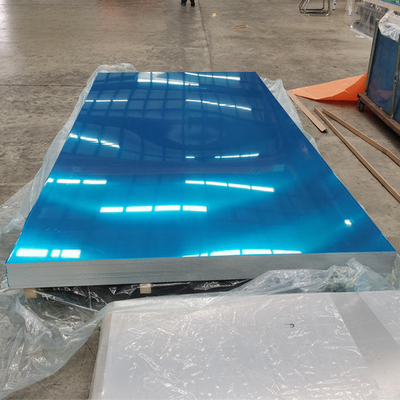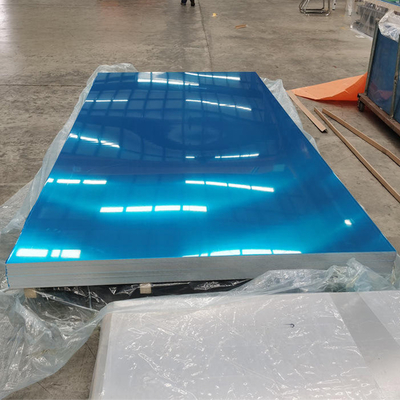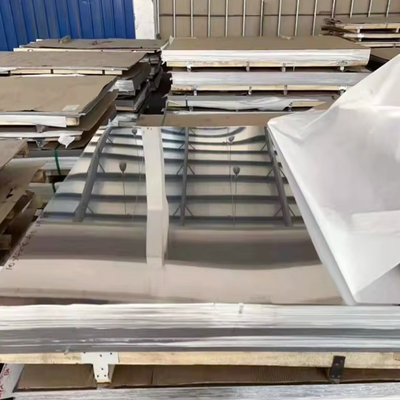-
Cewka z taśmy aluminiowej
-
Cewka aluminiowa powlekana kolorem
-
Rolka z folii aluminiowej
-
Aluminiowa płyta
-
Aluminiowy krążek
-
folia poliestrowa laminowana z folii aluminium
-
Płyta aluminiowa w kratkę
-
Blacha aluminiowa diamentowa
-
Tłoczona blacha aluminiowa
-
Anodowana blacha aluminiowa
-
Lustrzana blacha aluminiowa
-
Pojemnik z folii aluminiowej
-
Pudełko na lunch z folii aluminiowej
-
Grill jednorazowy
-
 Jaskółka oknówkaKiedy po raz pierwszy współpracowaliśmy z Yongsheng Aluminium, okazało się to bardzo łatwe, ponieważ czas dostawy towarów był bardzo szybki, a kierownik firmy był również bardzo profesjonalny.
Jaskółka oknówkaKiedy po raz pierwszy współpracowaliśmy z Yongsheng Aluminium, okazało się to bardzo łatwe, ponieważ czas dostawy towarów był bardzo szybki, a kierownik firmy był również bardzo profesjonalny. -
 Alice SuNasza firma i Yongsheng Aluminium współpracują od prawie trzech lat.
Alice SuNasza firma i Yongsheng Aluminium współpracują od prawie trzech lat. -
 ZoeyKupujemy koła aluminiowe od Yongsheng Aluminium i wysyłamy je do Ghany.
ZoeyKupujemy koła aluminiowe od Yongsheng Aluminium i wysyłamy je do Ghany.
1100 1060 Aluminum Sheet 0.5mm Thickness for Food Packaging/Electronic Heat Dissipation
| Miejsce pochodzenia | Prowincja Henan, Chiny |
|---|---|
| Nazwa handlowa | YONGSHENG |
| Orzecznictwo | ISO, RoHS |
| Numer modelu | 1000 serii 3000 5000 |
| Minimalne zamówienie | 2 tony |
| Cena | 3050-3250 USD/Ton |
| Szczegóły pakowania | Standardowe opakowanie na morze |
| Czas dostawy | 7-25 dni po potwierdzeniu zamówienia |
| Zasady płatności | L/C, D/A, D/P, T/T |
| Możliwość Supply | 5000 ton miesięcznie |

Skontaktuj się ze mną, aby uzyskać bezpłatne próbki i kupony.
Whatsapp:0086 18588475571
Wechat: 0086 18588475571
Skype: sales10@aixton.com
W razie jakichkolwiek wątpliwości zapewniamy całodobową pomoc online.
x| Słowo kluczowe | Arkusz aluminiowy | Tworzywo | Metal aluminiowy |
|---|---|---|---|
| Hartować | O-H112 | Szerokość | 10-2000 mm |
| Grubość | 0,15-200 mm dostosowane | Kształt | Płaska płyta |
| Obróbka powierzchniowa | Wykończenie młyna | Usługa przetwarzania | Zginanie, oddzielenie, spawanie, uderzenie, cięcie |
| Port | Qingdao, Szanghaj, Tianjin | Próbka | Bezpłatny |
| Podkreślić | 0.5mm aluminum sheet for food packaging,1060 aluminum plate for heat dissipation,1100 aluminum sheet with 0.5mm thickness |
||
AluminumPlate/Sheet is one of the most widely used categories in aluminum processing materials. It has diverse classification dimensions and is applied in multiple industries. The following provides a systematic overview from various perspectives to introduce the properties of aluminum plates.
|
Alloy Series |
Core Features |
Typical Application |
|---|---|---|
|
1000 Series |
Pure Aluminum Plate Soft in texture, extremely corrosion-resistant, good electrical conductivity / thermal conductivity, low in strength, easy to process |
1. Electronics industry: Conductive sheets, capacitor casings 2. Chemical industry: Corrosion-resistant containers, pipelines 3. Daily necessities: Cooking utensils, decorative foil substrates 4. Signs, nameplates |
|
2000 Series |
Al-Cu Alloy Plate, High strength, resistant to high temperatures, but poor corrosion resistance. Surface treatment (such as anodizing) is required. |
1. Aerospace: Aircraft fuselage frame, wing skin 2. Military industry: Armored vehicle components, missile casing 3. High-pressure vessels: High-strength pressure-bearing components |
|
3000 Series |
Al-Mn Alloy Plate, Medium strength, good corrosion resistance, excellent plasticity, and easy to weld |
1. Food industry: Canned body, food packaging containers 2. Refrigeration industry: Air conditioning evaporator, condenser fins 3. Decoration industry: Indoor ceiling, curtain wall (for less demanding scenarios) |
|
4000 Series |
Al-Si Alloy Plate, Low melting point and wear-resistant. It is commonly used in casting materials, but less frequently in sheet form. |
1. Welding materials: Aluminum welding rods, welding wires, base materials 2. Wear-resistant components: Engine cylinder liner, heat-resistant parts |
|
5000 Series |
Al-Mg Alloy Plate, High strength, extremely strong corrosion resistance, good low-temperature performance, and easy to shape. |
1. Ships/Ocean: Ship hull exteriors, marine platform components 2. Transportation: Car body panels, subway car panels 3. Outdoor Engineering: Containers, outdoor billboards, high-voltage cable trays |
|
6000 Series |
Al-Mg-Si Alloy Plate, Heat-treatable strengthening, medium strength, excellent corrosion resistance, and excellent machinability |
1. Construction industry: Aluminum alloy window and door profiles, curtain wall panels 2. Electronic equipment: Laptop computer shells, mobile phone body frames 3. Furniture: Office furniture frames, aluminum tabletops and chair panels |
|
7000 Series |
Extremely high in strength, poor corrosion resistance, high price |
1. High-end aviation: Aircraft landing gear, missile body 2. Sports equipment: Bicycle frame, snowboard, hiking stick 3. High-end industry: Precision mold, high-strength structural component |
1.Technical and Process Advantages
1) Mature smelting and casting rolling technologies: Our factory has developed standardized temperature control for different aluminum plate materials such as 1 series (pure aluminum), 3 series (aluminum-manganese alloy), and 5 series (aluminum-magnesium alloy). For example, the precise melting temperature control for pure aluminum is maintained within 660-700℃. The degassing and slag removal processes effectively reduce the defect rates of internal pores and inclusions in the ingots, and the mechanical properties of the finished aluminum plates (such as tensile strength and elongation) fluctuate within ±5% range, which is much better than the industry average of ±8%.
2) High-precision rolling and surface treatment processes: We are equipped with multiple upgraded four-roll reversible cold rolling machines that can precisely roll aluminum plates with thickness ranging from 0.1mm to 10mm. The thickness tolerance can reach as low as ±0.01mm, meeting the extremely high precision requirements of fields such as electronics and packaging. At the same time, we master a full range of surface treatment processes including anodizing, electro-etching coating, and film coating, which can be customized according to customer needs (such as mirror finish, matte finish, or brushed finish), and the adhesion and corrosion resistance of the coatings pass the salt spray test (neutral salt spray test ≥ 500 hours). The maturity of the process has been verified through long-term market validation.
3) Rapid response capability for customized processes: Our factory has established a "process parameter database". For special scenarios (such as 5 series aluminum plates for marine use with corrosion resistance, and 3 series lightweight aluminum plates for automobiles), we can quickly match exclusive production processes without the need for long-term trial production and debugging. The process confirmation cycle for customized orders is 30% shorter than the industry average.
2.Advantages in Quality Control Management
1) Selecting raw materials carefully: Only high-purity aluminum ingots that meet the standards of GB/T3190 (China) or ASTMB209 (USA) are purchased. The aluminum content must be ≥ 99.7%. Each batch of raw materials needs to be tested for composition using a spectrometer to prevent product performance issues caused by excessive impurities.
2) Real-time monitoring of the production process: Key processes (such as melting, rolling, and annealing) are equipped with online detection equipment - the melting process monitors composition and temperature in real time, the rolling process controls thickness using a laser thickness gauge, and the annealing process monitors the uniformity of furnace temperature using thermocouples. Data is recorded every 10 minutes to ensure traceability of the production process.
3) Full-item inspection of finished products: The finished aluminum plates need to undergo four-level inspections: appearance, size, performance, and weather resistance. The appearance is inspected using visual and light detection, without defects such as scratches or color differences; size is checked using micrometers and vernier calipers (sampling rate ≥ 5%); mechanical properties are tested using a universal material testing machine for tensile and yield strength; for outdoor-use plates, additional high and low temperature cycling tests (-40℃ to 80℃, 50 cycles) are conducted for weather resistance. Non-conforming products are 100% reworked, and the factory pass rate is stable at over 99.8%.










